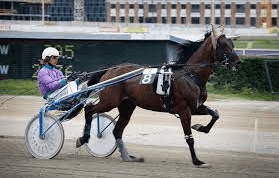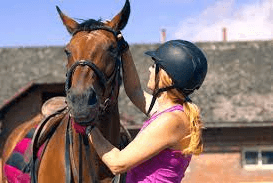How Can I Train A Horse For A Steeplechase Race?

Steeplechase races, known for their exhilarating combination of speed and jumping over obstacles, require specialized training to prepare horses for the demanding competition. In order to succeed in these challenging races, trainers must focus on building the horse’s endurance, developing their jumping ability, and honing their racing skills. This article aims to provide a comprehensive guide on how to train a horse for a steeplechase race, offering valuable insights and techniques that will enable trainers to maximize their horse’s performance on the racetrack.
To begin with, building endurance is crucial for a successful steeplechase horse. Endurance training involves gradually increasing the horse’s exercise intensity and duration over time. Long-distance galloping sessions combined with interval training can help improve cardiovascular fitness and stamina. Additionally, incorporating hill work into the training regime can strengthen the horse’s muscles while simulating the uphill challenges of steeplechase courses. By systematically increasing the horse’s endurance through targeted workouts and conditioning exercises, trainers can ensure that their horses have the necessary physical strength and staying power required for these rigorous races.
In addition to endurance, developing jumping ability is another key aspect of steeplechase training. Horses need to be skilled in navigating various types of obstacles such as hurdles, brush fences, or water jumps during a race. Training should include regular practice over different jump types at varying heights and distances. Gradually introducing more complex courses with challenging combinations will enhance both confidence and technique in jumping. By providing horses with ample opportunities to refine their jumping skills through systematic training methods like gridwork or pole exercises, trainers can prepare them for tackling any hurdle they encounter during a steeplechase race.
In conclusion, training a horse for a steeplechase race requires meticulous attention to detail across multiple aspects of preparation. By focusing on building endurance through specific workouts tailored towards improving cardiovascular fitness and stamina levels, trainers can ensure their horses have the necessary physical strength for these demanding races.
Similarly, developing jumping ability through consistent practice over various obstacles and gradually increasing the complexity of courses will equip horses with the skills needed to navigate challenging steeplechase tracks successfully. With a comprehensive training regime that encompasses both endurance and jumping, trainers can maximize their horse’s potential on the racetrack and set them up for success in steeplechase competitions.
Building Endurance for Stamina and Speed
Developing a structured training program that gradually increases the horse’s workload and incorporates interval training can enhance their cardiovascular fitness, muscular endurance, and speed capabilities required for steeplechase racing.
Improving cardiovascular health is crucial in preparing horses for the demands of a steeplechase race. This can be achieved through regular aerobic exercise such as trotting and cantering, which helps to strengthen the heart and lungs.
Interval training techniques further contribute to enhancing a horse’s stamina by incorporating short bursts of high-intensity exercise interspersed with periods of active recovery. These intervals challenge the cardiovascular system, allowing it to adapt and become more efficient at delivering oxygen to working muscles.
By gradually increasing both the intensity and duration of these intervals over time, horses are able to build their endurance levels while also developing the necessary speed capabilities for steeplechase racing.
Implementing interval training techniques not only improves physical fitness but also aids in preventing injuries by ensuring that horses are adequately conditioned for the rigors of this challenging sport.
Developing Jumping Ability for Obstacle Navigation
Enhancing the equine’s ability to navigate obstacles with precision and agility is akin to sharpening an arrowhead for optimal accuracy.
In order to develop a horse’s jumping ability for obstacle navigation in steeplechase races, training techniques and specialized equipment play crucial roles.
Training sessions should focus on gradually increasing the height and complexity of jumps, allowing the horse to build confidence and develop proper technique.
Grid work exercises, such as placing multiple jumps in succession at specific distances, can improve the horse’s coordination and timing while navigating obstacles.
Additionally, incorporating cavaletti exercises into training routines helps horses learn to adjust their stride length and improve their balance during jumps.
To further enhance jumping ability, pole work exercises can be introduced to encourage horses to be more careful with their footwork over obstacles.
Specialized equipment like jump cups that allow for easy adjustment of jump heights are essential tools in developing a horse’s jumping skills.
Overall, combining these training techniques with appropriate specialized equipment will enable horses to navigate obstacles effectively and efficiently during steeplechase races.
Honing Racing Skills for Competitive Performance
To excel in competitive performance, it is imperative to refine and perfect the racing skills necessary for achieving optimal results.
When training a horse for a steeplechase race, improving agility for quick turns is essential. Horses need to be able to navigate tight corners and obstacles efficiently while maintaining their speed and momentum. This can be achieved through specific exercises that focus on enhancing the horse’s flexibility and responsiveness.
Additionally, enhancing mental focus for race strategy is crucial. Horses need to be able to analyze the course layout, anticipate upcoming obstacles, and make split-second decisions during the race. Mental training techniques such as visualization exercises and exposure to various race scenarios can help sharpen their cognitive abilities.
By combining these two aspects of training – improving agility and enhancing mental focus – horses can develop the necessary skills to excel in steeplechase races and achieve competitive success.
Frequently Asked Questions
What is the ideal diet for a steeplechase racehorse to maintain optimal stamina and performance?
The ideal diet for a steeplechase racehorse, ensuring optimal stamina and performance, involves a well-balanced mix of high-quality forage, energy-rich grains, and essential nutrients. Proper hydration and regular monitoring of the horse’s body condition are also vital for maintaining peak performance.
How often should a horse receive veterinary check-ups to ensure their health and well-being during training?
Regular veterinary check-ups are crucial for ensuring the health and well-being of a horse during training. The frequency of these check-ups depends on factors such as age, health history, and intensity of training, but typically should occur at least once or twice a year. These check-ups allow for early detection and prevention of potential issues that can affect the horse’s performance and overall welfare.
Are there any specific exercises or training techniques that can help improve a horse’s balance and agility for jumping obstacles?
To enhance a horse’s balance and agility for jumping obstacles, incorporating targeted exercises and techniques is crucial. These can include grid work, cavaletti training, gymnastic exercises, and pole work. Such practices foster precision, coordination, and flexibility in the equine athlete.
What safety measures should be taken during steeplechase training to minimize the risk of injuries for both the horse and the jockey?
To ensure jockey safety and minimize the risk of injuries during steeplechase training, it is crucial to implement appropriate safety measures. These may include proper protective gear for both horse and jockey, regular veterinary check-ups, maintaining a safe track surface, monitoring weather conditions, and providing adequate rest periods for the horse to prevent overexertion and fatigue. Additionally, implementing a structured training program that gradually increases the intensity and difficulty of jumps can help condition the horse effectively while minimizing the risk of injuries.
Can you provide any tips or advice on how to mentally prepare a horse for the intensity and competitiveness of a steeplechase race?
Mental conditioning is crucial for horses in steeplechase races. Relaxation techniques, such as desensitization and positive reinforcement, help reduce anxiety and increase focus. This prepares the horse to handle the intensity and competitiveness of the race effectively.
Conclusion
In conclusion, training a horse for a steeplechase race requires dedicated efforts in building endurance, developing jumping ability, and honing racing skills. To ensure the horse’s success in this demanding sport, it is crucial to focus on gradually increasing its stamina and speed through systematic conditioning exercises.
These include long gallops, hill work, interval training, and regular practice sessions on varied terrains. By adhering to a structured fitness plan and incorporating proper nutrition and rest periods, the horse can build the necessary physical foundation for optimal performance.
Moreover, enhancing the horse’s jumping ability is essential for navigating various obstacles encountered during a steeplechase race. Training should encompass pole work exercises to improve coordination and technique while gradually introducing small fences that simulate racecourse obstacles. As the horse progresses, more challenging jumps can be introduced to enhance its agility and confidence in tackling hurdles or water jumps commonly found in steeplechase courses.
Lastly, honing racing skills involves simulated race scenarios where horses are trained to respond to commands from jockeys or riders without hesitation. Regular practice races allow horses to develop tactical awareness by adapting their pace according to track conditions and competitors’ movements—a skill vital for competitive performance. Additionally, incorporating schooling sessions with experienced jockeys helps refine the horse’s responsiveness to subtle cues while maintaining focus throughout the race.
In summary, ‘Rome wasn’t built in a day,’ applies aptly when it comes to training horses for steeplechase races as it requires patience, consistency, and expertise. By following a comprehensive training program that encompasses endurance building exercises alongside effective jumping techniques and racing simulations; trainers can maximize a horse’s potential for success in these adrenaline-fueled races. Remembering that each step of training contributes significantly towards overall performance will ensure that both trainer and steed achieve their goals on raceday.




